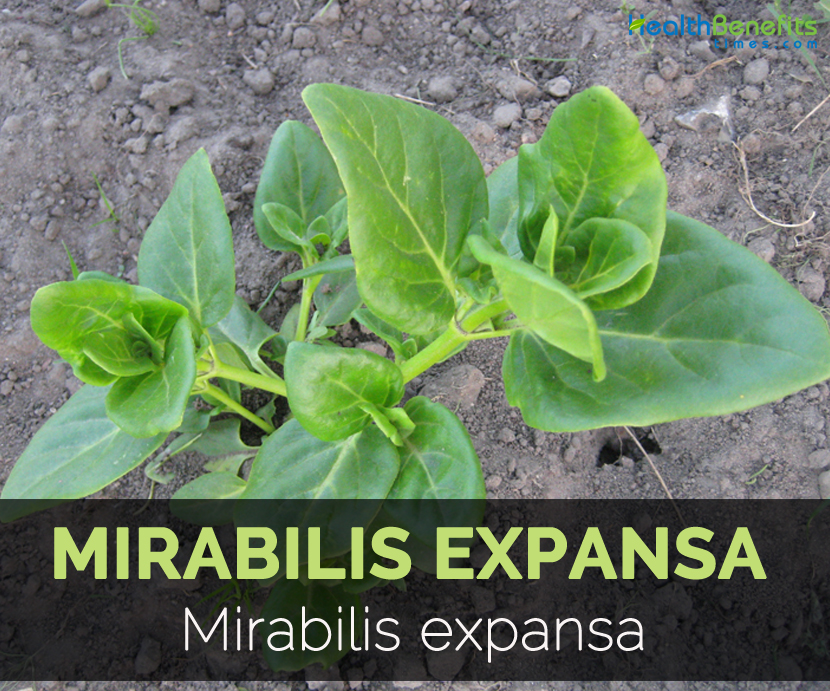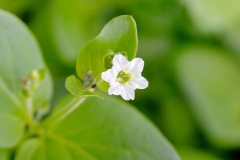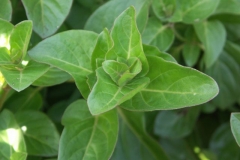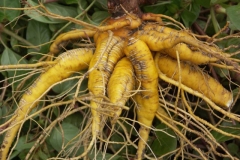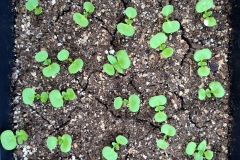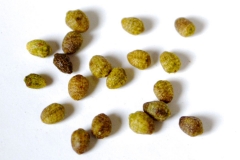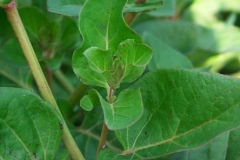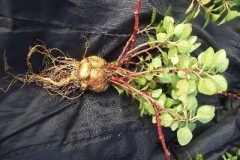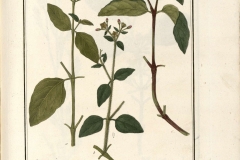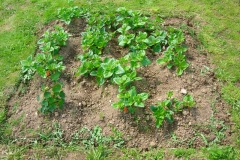Belonging to the family Nyctingaceae, Mirabilis expansa is a large plant which grows to 6 feet in diameter and 3-4 feet high in a single growing season. Stems are unruly and long. Root is the primary edible part weighing 5 pounds. Roots have a subjective flavor i.e. a combination of potato and cabbage.
Plant description
Mirabilis expansa is a compact and herbaceous perennial herb which grows 1 meter high. Swollen stems are white, yellow or salmon colored. They are fleshy, smooth about 50 cm long and 5 cm in diameter. Tuberous roots while young are yellow and older ones are white. Aerial portion is a mass of foliage formed from basal shoots. Stems are cylindrical having short distinct internodes, pale green or has reddish markings. Leaves are opposite ovate or cordate, petioled and pubescent, 8 cm by 3 cm wide having reddish edges. Inflorescences are terminal racemes and 3-6 cm long topped with viscid hairs. Flowers are apetalous and calyx is tubular having five cleft purple, white or white-purple mottled perianth. Stamens are 5-6 long as perianth. Fruit is a hard capsule which consists of small and dark brown seeds.
Mirabilis expansa was a predominant food of at least one tribe conquered by the Incas. Inca practiced to dislocate potentially resistant populations to other areas of empire to weaken solidarity. These people took crop with them so it was spread from Cajamarca, Peru to Bolivia and Ecuador. In 1965, the crop was rediscovered and first described in the scientific literature after identified near Yorkarguaya in Bolivia.
Culinary uses
- Swollen roots are cooked.
- Swollen roots and stems are either boiled or fried as vegetables.
- In Bolivia, dried tubers are chopped, boiled and mixed with brown sugar or honey and toasted grain.
- Use the cooked tubers as an ingredient in soups and stews.
- Mix the salty and sweet forms with molasses or syrup and eat with tomatoes and fish.
- The leaves are also eaten as a cooked leafy vegetable or used raw in salads and chilli sauces.
- The roots are also sundried.
- Leaves are consumed raw or added to salads.
References:
https://www.itis.gov/servlet/SingleRpt/SingleRpt?search_topic=TSN&search_value=506582#null
https://pfaf.org/user/Plant.aspx?LatinName=Mirabilis+expansa
Comments
comments
| Mirabilis expansa Quick Facts | |
|---|---|
| Name: | Mirabilis expansa |
| Scientific Name: | Mirabilis expansa |
| Origin | Andes in South America, distributed naturally in the area of La Paz (Bolivia), to the North of Quito (Ecuador) and in Cajamarca (Peru) |
